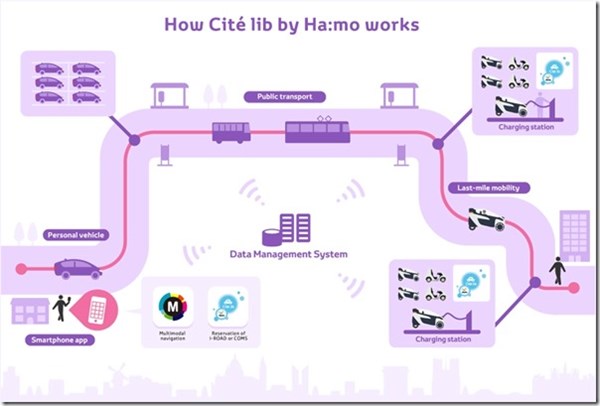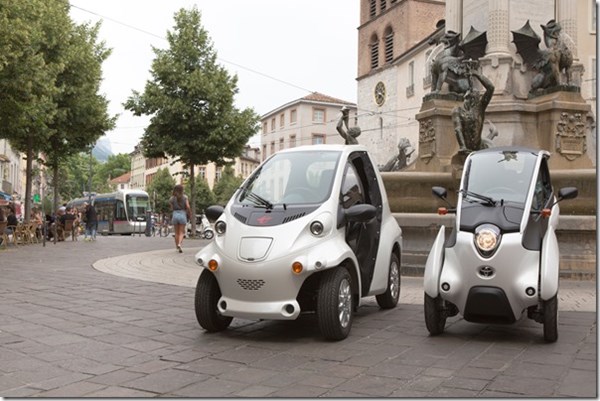Addressing “The Last Mile”
In mobility system terms, “the last mile” (which could just as easily be “the first mile” in a given commute) is something that can probably be better addressed by something other than automobiles—at least in many cases—particularly given increasing urban congestion and lack of parking.
In mobility system terms, “the last mile” (which could just as easily be “the first mile” in a given commute) is something that can probably be better addressed by something other than automobiles—at least in many cases—particularly given increasing urban congestion and lack of parking.
Last week, the City of Grenoble [as in France], Grenoble-Alpes Métropole, EDF Group, Toyota, and Citélib announced a collaboration that will come to fruition in October, a collaboration that will give rise to a rather sophisticated mobility system for the town in the French Alps. They are, in effect, addressing the last mile.
Featured Content
It is called “Citélib by Ha:mo,” and it really helps enhance what is already a robust public transportation system.

In addition to the municipal organizations, the players are:
EDF, a French energy company that runs Sodetrel, which will manage approximately 30 charging stations.
Citélib, which is an existing car-sharing service in Grenoble
Toyota, which will provide 70 i-Road and COMS ultra-compact electric vehicles.
And while not a player, but part of the name:
Ha:Mo, which is the name Toyota has given to its experiments in alternative transportation (with the first being in Japan). It signifies “Harmonious Mobility.” Speaking of the forthcoming French execution, Michel Gardel, vp of Toyota Motor Europe, said, “Ha:mo was designed to reduce the stress caused by traffic jams, peak traffic hours, and searching for a parking space. It also allows a reduction in emissions that cause poor air quality in city centers.”
About those vehicles, both of which are electric vehicles. They are truly personal transportation, not even a Prius c in size.

Consider the i-Road. It is 92 in. long with a 67 in. wheelbase. It is 34 in. wide and 57 in. high. It has a curb weight of 661 lb. Its minimum turning radius is just 9.8 ft. In Japan it is a one-passenger vehicle; it Europe it meets regulations for two (seriously: 34 in. wide and someone images that two people are going to fit in there?). It has three wheels.
The scenario is that someone who needs to get into, say, the city center, would take a tram for 20 minutes, a bus for another ten, which then leaves a five-minute walk.
The alternative is to take the tram, then having used a smart phone to schedule a vehicle, get a vehicle and then take it near the final destination during a six-minute drive that would put the person two minutes away from the destination.
Because of the 30 charging stations (which is where the vehicle would be dropped off), they calculate that at least one would be proximate to many places in Grenoble.
(Or it could be that a vehicle is picked up close to home, then driven to the tram station, thereby addressing the first mile.)
Grenoble is comparatively small, with about 157,000 people. The student population is about 60,000.
The people there are already oriented toward public transportation, as 78-million people used public transport in 2013. There are 5,000 bikes in the Metrovélo public rental service and more than 200 miles of bicycle lanes in the city.
Perhaps this undertaking is comparatively small. But it is certainly significant.


.jpg;width=70;height=70;mode=crop)
















